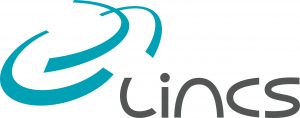2022 LINCS Annual Workshop with its Scientific Committee
**VIDEOS OF THE SCIENTIFIC COMMITTEE TALKS**
**UPDATED PROGRAM OF THE WORKSHOP**
june 2022, wednesday 29th and Thursday 30th (9.30am – 6pm)
The LINCS launches its Annual Workshop with the Scientific Committee, composed by internationally renowned scholars (check the composition of our Sci.Co. by clicking here).
organization committee: sÉbastien tixeuil (Sorbonne UNIVERSITÉ), anna frisone (Lincs)
The workshop will be held in a presence-remote hybrid form in the new lincs premises in palaiseau (amphi rose dieng, 19 place marguerite perey, 91123 Palaiseau)
The Workshop will include:
- Scientific Highlights by the LINCS senior members
- “Elevator pitch” collective sessions by the LINCS PhD students, followed by parallel poster sessions
- Invited talks by the members of the Scientific Committee
The Workshop is a reserved event for the LINCS scientific community, but the video recordings of the talks given by the members of our Scientific Committee will be later made available on the LINCS YouTube channel (check it out by clicking here!).
TITLES AND ABSTRACTS OF THE TALKS BY THE MEMBERS OF LINCS SCIENTIFIC COMMITTEE
MARCO AJMONE MARSAN (Politecnico Torino)
TITLE: Modeling Service Mixes in Access Links
ABSTRACT: Access links, both wired and wireless, carry the traffic generated by a mix of services, such as video, audio, web, gaming, etc. Some services generate traffic with constant or almost constant data rate (for example a voice conversation or the live streaming of a sport event) while other services can adapt their data rate to the available network resources (for example a file transfer or a web page download).
The prediction of the performance that can be obtained in presence of mixes of traffic of different nature is important for the definition of access control and scheduling algorithms, and has ben tackled by several researchers, mostly resorting to approximations, because exact solutions are not available.
This talk shows that a simple quasi-optimal admission control scheme allows the simple derivation of exact results that highlight interesting, unexpected behaviors.
ISRAEL CIDON (Technion)
TITLE: DRAGON: Next generation WAN optimization for geo-distributed Applications
ABSTRACT: Modern enterprise infrastructures, applications, and services increasingly become geo-distributed, spanning large geographical distances across edge nodes, clouds, and data-centers. These applications rely on data traditionally placed in central data-centers connected by LAN. But, applications that connect with remote data and other services over WAN experience considerable cost and performance penalties. Today, the common solution is to move the data to a central data-warehouse or few data-lakes and allocate the compute at the same place where other services and the data reside. However, this solution is expansive both at the storage and network bandwidth costs. We introduce DRAGON, a peer-to-peer geo-distributed WAN optimization system that accelerates the operation of geo-distributed next-generation applications. It does so by optimizing the latency, throughput, and costs of east-west traffic over the WAN. DRAGON dramatically improves costs and end-to-end performance for both east-west and north-south traffic.
ROCH GUERIN (Washington University in Saint Luis)
TITLE: Minimizing inter-datacenter network bandwidth under latency constraints1*§
ABSTRACT: Much of today’s traffic flows between datacenters over private networks. The operators of those networks have access to detailed traffic profiles with performance goals that need to be met as efficiently as possible, e.g., realizing latency guarantees with minimal network bandwidth. In this work, we explore two aspects of interest. The first is the relative benefits afforded by the use of more complex schedulers in the network, and the second is the extent to which traffic (re)shaping, both on ingress and in-network, can be of benefit. We start with a basic one-hop configuration, for which we are able to derive explicit results that then serve as building blocks for the investigation of more general multi-hop network configurations. The results help illustrate how judicious traffic shaping can help reduce the network bandwidth required to meet performance guarantees, including in helping lower complexity schedulers perform nearly as well as more complex ones.
1 The first part of this work (single hop case) was published at ITC’33
* This is joint work with Jiaming Qiu and Jiayi Song, WashU, and Henry Sariowan, Google
§ The latter part (multi-hop setting) of this talk is very much work in progress
P. R. KUMAR (Texas A&M University)
TITLE: Revisiting Exploration versus Exploitation: Adaptive Control, Multi-Armed Bandits and Reinforcement Learning
ABSTRACT: We consider the central problem of exploration versus exploitation that lies at the heart of several dynamic learning problems. We revisit the problem of regret in Reward-Biased Maximum Likelihood Method proposed around 1980 for adaptive control. We examine it in the light of recent interest in solving large scale bandit problems as well as reinforcement learning. For the former, we present a family of schemes that admits simple index policies whose regret performance appears to be near the best apparently currently available, and at low computational complexity per decision. For reinforcement learning we present the results of comparative simulation experiments that show its competitive performance.
[Joint work with Akshay Mete, Rahul Singh, Ping-Chun Hsieh, Yu-Heng Hung, Xi Liu, and Anirban Bhattacharya].
PATRICK THIRAN (EPFL)
TITLE: Source location in random networks.
ABSTRACT: We survey some results on the location of the source of a diffusion or of an epidemics in a network, given the infection data gathered at some of the nodes. Because of the large size of many real networks, the states of all nodes in a network cannot in general be observed. We show that it is fundamentally possible to estimate the location of the source from measurements collected by sparsely placed sensors. We compare two sensor placement strategies: either all the sensors are placed at once, before the diffusion starts (off-line placement) or they are placed sequentially, as the diffusion unfolds in the network (on-line placement). We distinguish two regimes, depending on the variance of the propagation delays. In the low noise regime, when propagation delays are (close to) deterministic values, the smallest number of sensors needed to exactly localize the source with an off-line (respectively, on-line) sensor placement is the metric dimension (MD) (resp., sequential metric dimension (SMD)) of the network. Clearly, the SMD is less than the MD, but we show that in some classes of random graphs, the difference is small (only a constant factor). In the high noise regime however, when the propagation delays have a quite large variance, the difference can be huge (from the order of n to log log n, for a linear graph of n nodes). This is a joint work with Gergely Odor and Victor Lecomte.
TITLES OF THE “scientific highlights” BY THE MEMBERS OF LINCS
FRACOIS BACCELLI (INRIA)
Title: Wireless Shadowing by Random Shapes
MARC-OLIVIER BUOB (NOKIA)
Title: A novel pattern-based edit distance for automatic log parsing
FRANCESCA BASSI (SYSTEMX)
Title: Towards a trust model in V2V communications
LEONARDO LINGUAGLOSSA (TELECOM-PARIS)
Title: The “data uncertainty principle” – measurements, analysis and AI for high-speed networks
FABIO PIANESE (NOKIA)
Title: Edge network support for AI/ML inference: dynamic early classification
TIMUR FRIEDMAN (SORBONNE UNIVERSITE)
Title: EdgeNet: deploying containers to the edge cloud
FABIEN MATHIEU (INVITED INRIA)
Title: A stochastic matching between graph theory and linear algebra
FRANCOIS DURAND (NOKIA)
Title: Coalitional Manipulation of Voting Rules: Simulations on Empirical Data
MAXIME MOUCHET (SORBONNE UNIVERSITE)
Title: Methodologies and tools for mapping the Internet at scale
CAMILA FERNANDEZ (NOKIA/SORBONNE UNIVERSITE)
Title: Ensemble Methods for Time-to-Event Analysis
LAURENT DECREUSEFOND (TELECOM-PARIS)
Title: Invertibility on the Poisson space and construction of Hawkes processes
TITLES OF THE “elevator pitch” presentations BY THE young researchers OF LINCS
| WEDNESDAY, June 29th | |
| 1. Davydov (Inria) | Replica-mean-field models and the Poisson Hypothesis |
| 2. Popineau (Inria) | Stochastic geometry and wireless networks |
| 3. Sun (Inria) | RIS-assisted MIMO for Serving Multiple UEs: Scattering or Beamforming |
| 4. Khaniha (Inria) | Perfect Sampling of a Null Recurrent Markov |
| 5. Roy Choudhury (Inria) | Genealogy of records of a class of random walks |
| 6. Tonkikh (Télécom-Paris) | Distributed Computing & Blockchain |
| 7. Bezerra de Araujo (Télécom-Paris) | Relaxed Abstractions for Decentralized Trust |
| THURSDAY, June 30th | |
| 1. Ben Ameur (Télécom-SudParis) | Cache allocation in multi-tenant edge computing via online reinforcement learning |
| 2. Patané (Télécom-SudParis) | VehiCloud: How can vehicles increase the cloud intelligence? |
| 3. Elkael (Télécom-SudParis) | Monkey Business: Reinforcement Learning Meets Neighborhood Search for Virtual Network Embedding |
| 4. Raynal (Nokia) | RING Regular expressions INduction and Generation |
| 5. Bizon Monroc (Inria) | Reinforcement Learning for Wind Farm Control |
| 6. Le Corre (Inria) | Control of flexibilities in an electrical grid |
| 7. Shilov (Inria) | Game theoretic approaches for decentralized electricity markets |
| 8. Weber (Inria) | Connections between Reinforcement Learning and Optimal Control |


